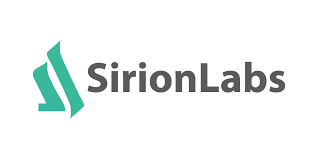
Contract obligations can have a major impact on an organization’s exposure to risk. This has been underscored by the growing importance of force majeure clauses during the COVID-19 pandemic.
COVID and the Rise of Force Majeure Clauses
| “A force majeure clause allocates the risk of loss if performance is hindered, delayed, or prevented because of an event that the parties could not have anticipated or controlled. It provides a contractual defense, the scope and effect of which will depend on the express terms of a particular contract.”
─ American Bar Association |
Broadly defined, a force majeure is an unexpected event that may excuse a party from fulfilling a contract. Prior to the COVID-19 crisis, a force majeure clause was typically included in contracts as a standard templatized clause, without much attention paid to it. These clauses took on greater significance during the pandemic as commercial leases and other business contracts were disrupted by governmental shutdowns, leading to widespread litigation. Organizations began seriously considering how an unanticipated crisis could impact their business—and how they could build fail-safe measures addressing such a crisis into their contracts.
What are the Critical Data Points You Need to Understand from a Force Majeure Clause?
Enterprises that have adopted smarter contracting techniques, especially techniques powered by artificial intelligence (AI), are much better prepared to address any unexpected crisis that may arise and impact contract obligations. The first and perhaps most basic question artificial intelligence (AI) helps to answer is whether a contract includes an applicable force majeure clause. When the COVID-19 pandemic first struck, many businesses scrambled to scan their legacy portfolio to identify contracts where force majeure included pandemics and for visibility into business continuity provisions. Those businesses with the kind of robust contract analysis capability in place that AI provides were able to react much faster to the pandemic than those without.
Secondly, if the force majeure clause is invoked, does the contract offer provisions to offset the impact—and what are the dependencies? For example, when employees started working from home during lockdowns, companies had to interrogate employee contracts to ascertain if data security, privacy clauses, and regulatory obligations were adhered to by employees working remotely.
The third and crucial question that AI helps to answer regards fallback measures, such as insurance coverage or business continuity protocols. This is not just limited to force majeure events, but also offers insights into damages that a business can claim. For example, if supplier negligence causes a failure to renew insurance certificates, does the contract provision for this? Who bears the costs of the damages?
While it is unrealistic to assume that we can ensure business continuity in the face of Black Swan events—unpredictable events far beyond the norm with potentially severe consequences—we can start working toward creating an AI-led contracting practice that can help us minimize and mitigate risks. In this regard, AI can enable us to analyze our corpus of commercial contracts and identify opportunities to create redundancies within the supplier base. This can be achieved by breaking down and strategically segmenting onshore, nearshore, and offshore suppliers according to how their contracts demonstrate the ability to pivot during a crisis.
This depth of intelligence can be found buried deep within your contracts. So how do you go about uncovering it?
 SirionOne AI Helps Extract and Manage Key Elements of Risk, Leveraging AI to Migrate and Extract Data from Legacy Contracts
SirionOne AI Helps Extract and Manage Key Elements of Risk, Leveraging AI to Migrate and Extract Data from Legacy Contracts
Helping enterprises address Black Swan events was a primary objective when we started building the AI core of SirionOne’s contract lifecycle management (CLM) software. We knew that one of the most efficient ways of helping businesses answer key contract questions would be to bolt on to the existing tech stack—comprising CRM, P2P, ERP—and pull in the legacy contracts that usually reside in these data silos. The goal is to assemble every contract in one place so they can be moved to a centralized contract repository on the cloud.
This can be achieved by using SirionOne’s machine vision (advanced OCR) capabilities, which transforms existing and legacy contract documents into easily accessible, machine-readable formats. In turn, this entirely eliminates the need to trudge through email attachments and bulky files while trying to pull up documents for review. Once contract documents have been digitized, SirionOne’s powerful AI engine can extract contract metadata, clauses, and obligations and organize them into predefined taxonomies to enable easy searchability.
A contract document that has been broken up into its essential components, labeled, and organized can be quickly and efficiently searched. Simply by pulling up an active contract, keying in the pertinent terms and reviewing the force majeure clause and business continuity obligations, you can determine your organization’s exposure to risk in any scenario, from something as urgent as responding to a crisis event to day-to-day operational activities such as considering switching suppliers.
Once the digitization process is complete, SirionOne’s contract analytics capabilities can automate the identification of contracts that don’t have a force majeure clause or business continuity obligations baked into them. Armed with this knowledge, businesses can immediately initiate a negotiation process to have the contract amended using SirionOne’s change request function.
SirionOne: Seamless Functionality Throughout the Contract Lifecycle
SirionOne enables businesses to meet contract management needs by offering seamless functionality across the complete lifecycle of a contract – from authoring and negotiation to AI-powered legal review, automated risk assessment, and execution. Enterprises can leverage our platform as a one-stop solution that enables them to migrate their commercial contracts from across a fragmented IT systems landscape into a centralized repository as digital assets that are immediately accessible and easily mined for analytical insights.
If you’d like to learn more about how SirionOne’s state-of-the-art AI can help your organization prepare for and respond to a force majeure event and more, please drop us a line. We’d love to show you what our platform can do for your business.



















2 Responses
thank you for the information
You are very welcome! We are glad to have you here!